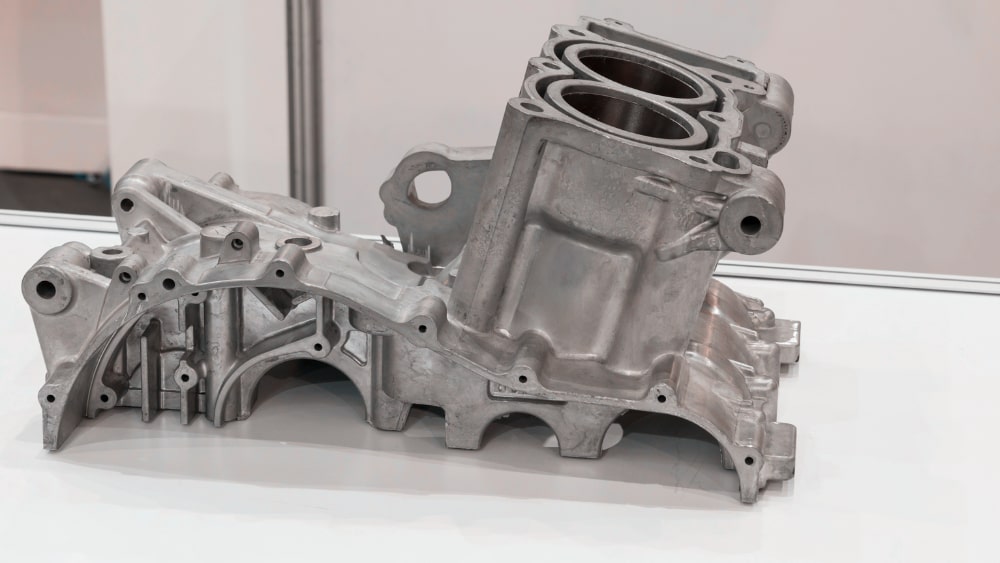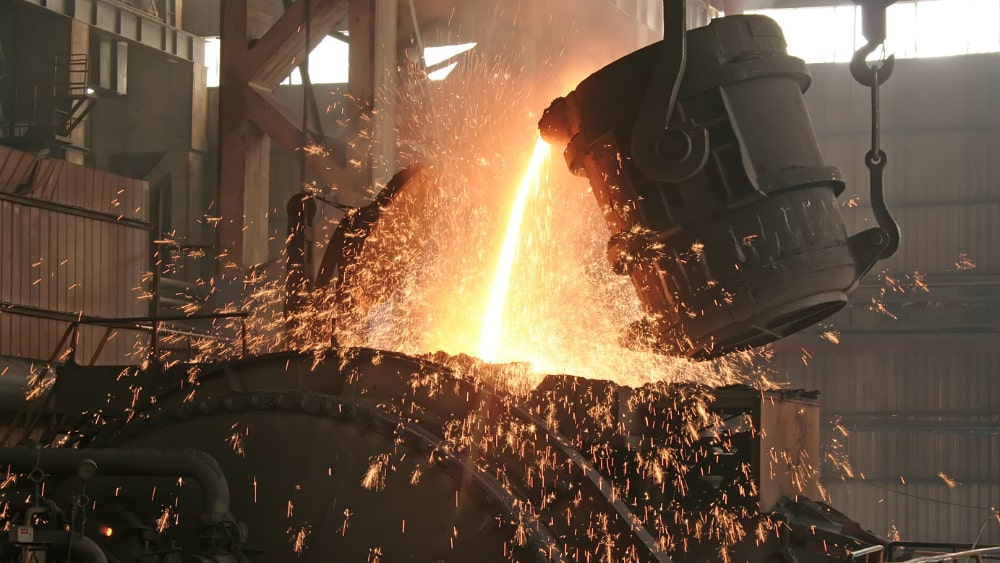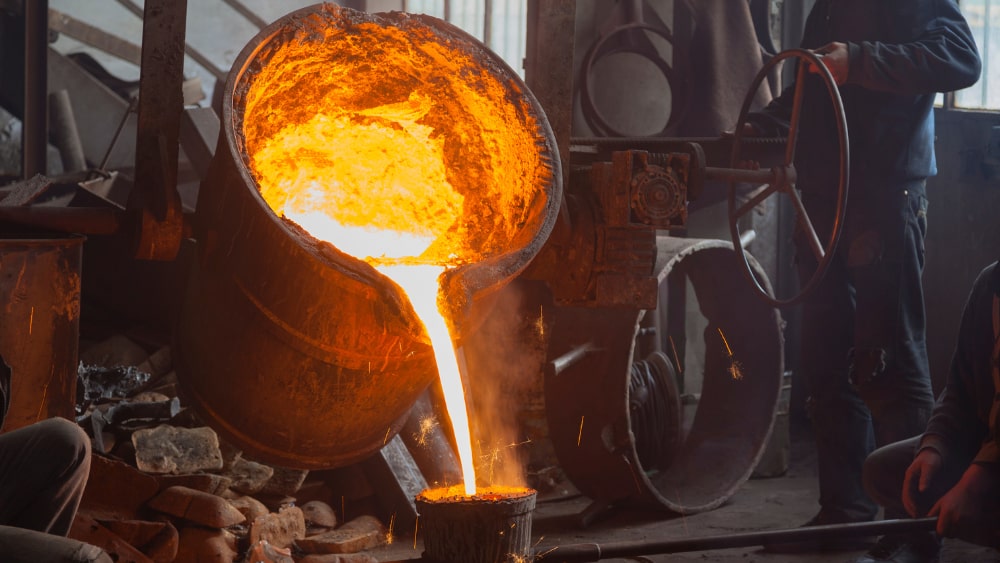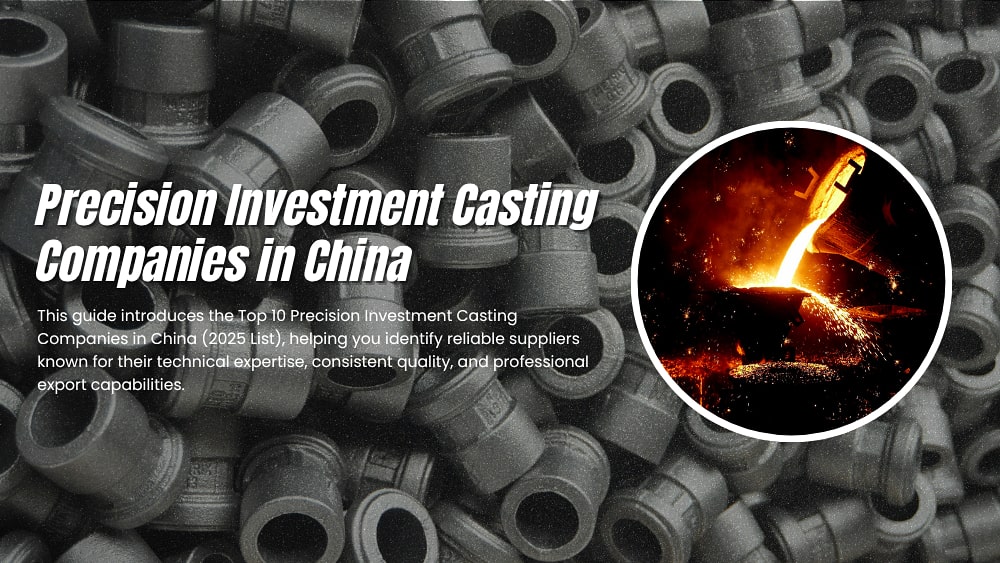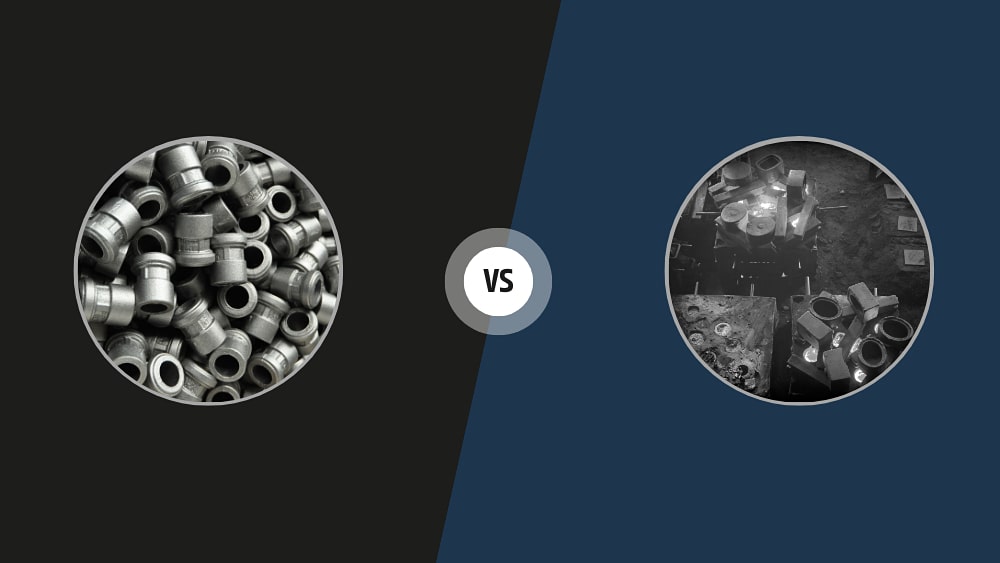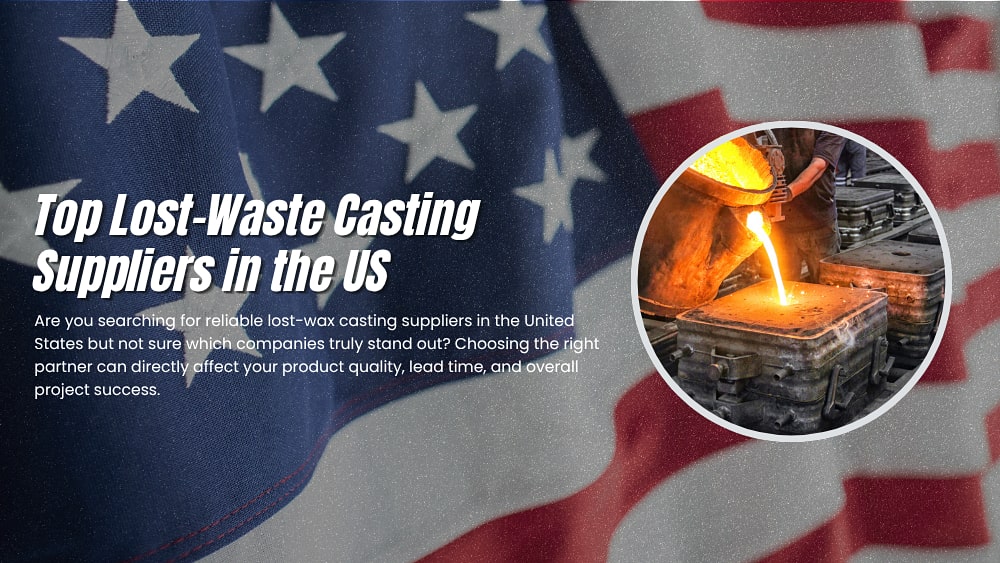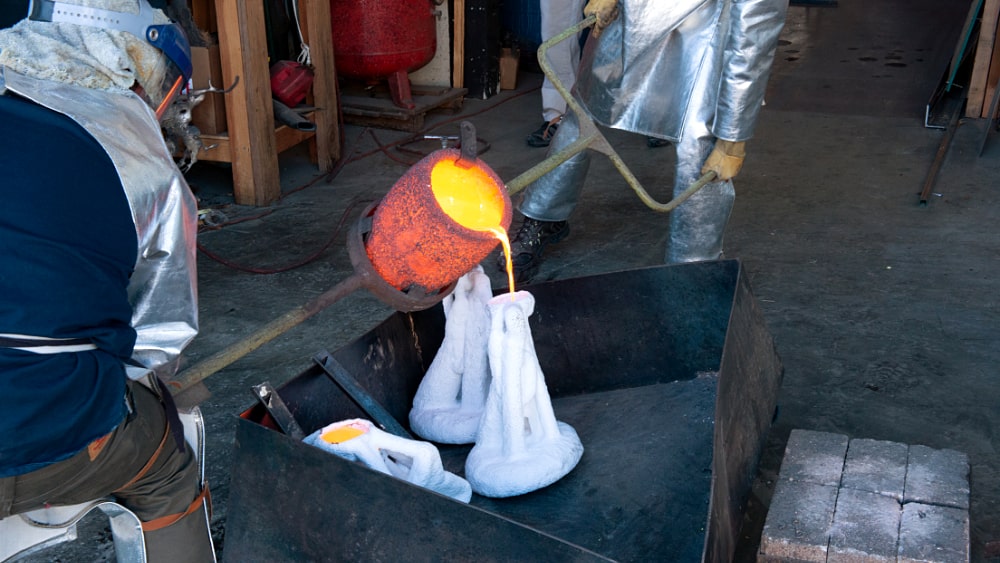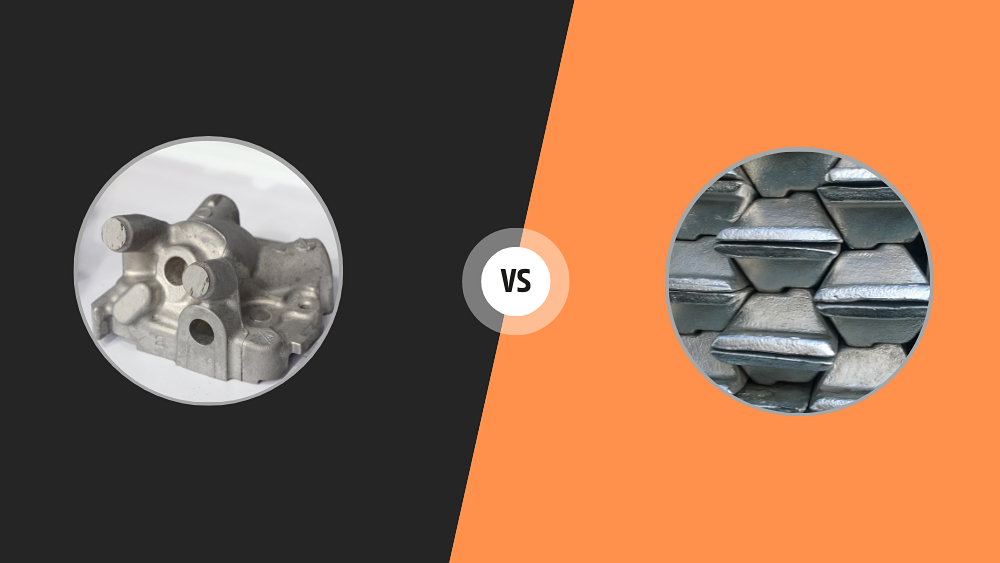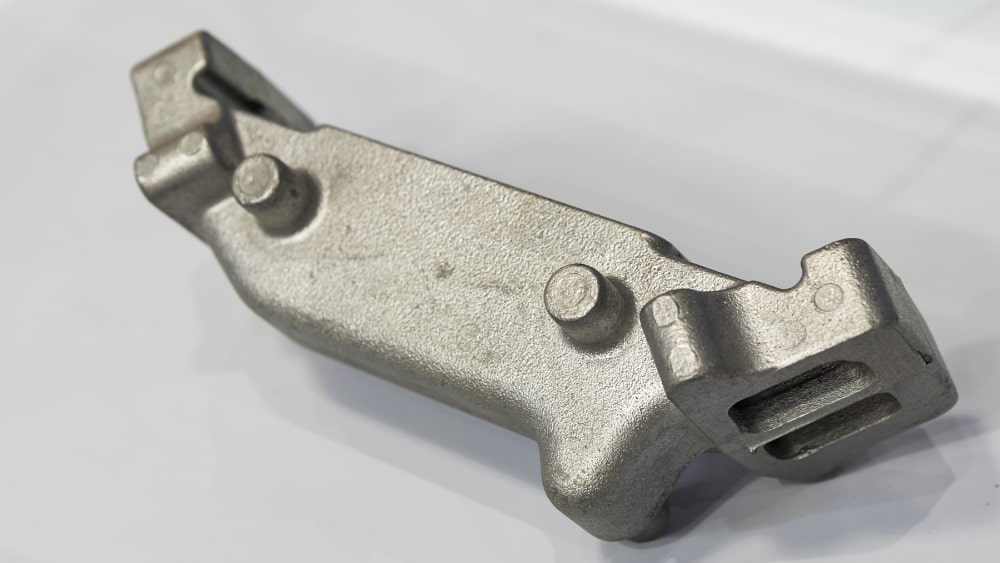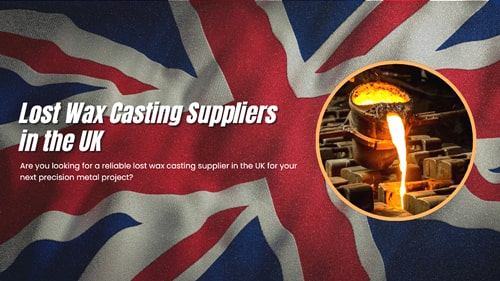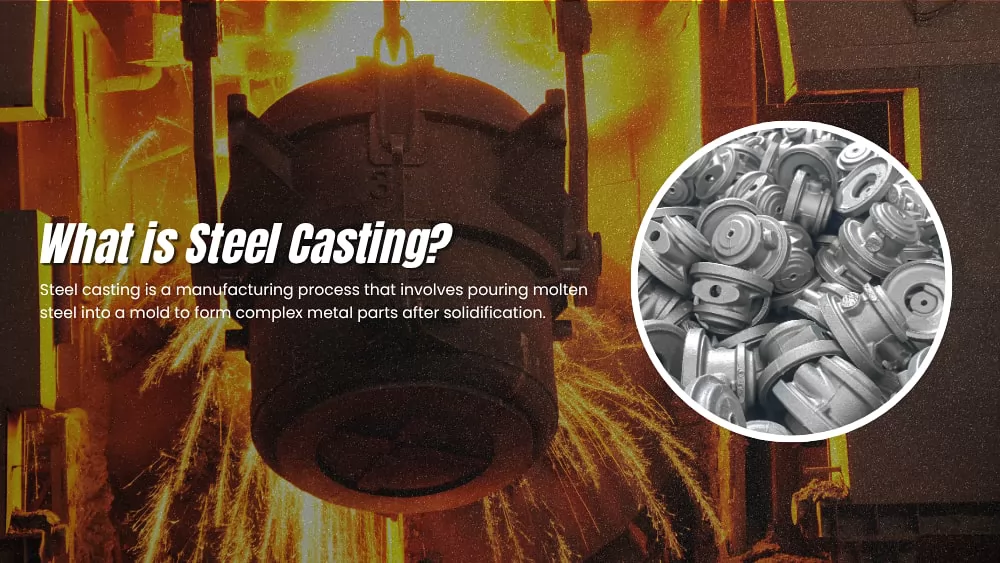
1. What Is Steel Casting?
Steel casting is a manufacturing process that involves pouring molten steel into a mold to form complex metal parts after solidification.
Unlike forging or machining, casting allows manufacturers to create shapes that are difficult or impossible to produce by other methods—especially large, heavy, or geometrically complex components.
Steel casting combines the strength of steel with the design flexibility of casting, making it one of the most versatile processes in modern metalworking.
2. How Is Steel Casting Made? (Main Processes)
The manufacture of steel castings is a foundational process where molten steel is poured into a custom mold cavity. It begins with mold production, creating a negative impression of the part in sand, often with pre-formed cores for internal geometries. After the steel is melted and refined, it is poured into the mold and left to solidify. The raw casting is then shaken out, followed by critical steps like cutting off excess material, surface cleaning, and essential heat treatment to enhance material properties. Every casting undergoes final quality inspection to ensure it meets all specifications before delivery.
Several metal casting methods can be used to produce steel castings, and each has its own advantages depending on part size, precision, and surface finish.
a. Sand Casting
-
The most widely used and cost-effective method for large or heavy parts.
-
Molds are made from sand mixed with binders.
-
Ideal for industrial machinery, valves, and heavy equipment components.
b. Investment Casting (Lost Wax Casting)
-
Creates precise, detailed castings with smooth surfaces.
-
Suitable for smaller parts requiring tight tolerances, such as pump impellers or automotive components.
-
Usually more expensive due to mold preparation and fine surface finish.
c. Lost Foam Casting
-
Similar to investment casting, but uses foam patterns instead of wax.
-
Reduces tooling cost and is suitable for medium-to-large castings.
-
Offers high accuracy and minimal machining needs.
At Qianhao, we use all three methods depending on client requirements—ensuring the best balance of precision, cost, and performance.
3. Common Materials Used in Steel Castings and Their Properties
Different types of steel can be selected based on required mechanical strength, corrosion resistance, and application environment.
| Category | Typical Grade | Carbon/Alloy Content | Main Properties | Typical Applications |
|---|---|---|---|---|
| Carbon Steel | ||||
| Low Carbon Steel | ZG200-400 | C < 0.25% | Excellent weldability and good toughness, but relatively low strength and hardness | Machine bases, frames, housings, and other components with low strength requirements |
| Medium Carbon Steel | ZG270-500 | C 0.25%–0.45% | Balanced strength, hardness, and toughness; most widely used carbon steel | Gears, wheels, connecting rods, pressure vessels |
| High Carbon Steel | ZG340-640 | C > 0.45% | High hardness, strength, and wear resistance, but poor weldability and high brittleness | Rolls, molds, crusher parts, and other wear-resistant components |
| Low Alloy Steel | ZG40Cr, ZG35CrMo, ZG40Mn2, etc. | Total alloy elements < 8% | Enhanced strength, toughness, and heat resistance after heat treatment | Heavy-duty structural parts in engineering machinery, power plant valve bodies, turbine casings, track shoes, bucket teeth |
| High Alloy Steel | ||||
| High Manganese Steel | ZGMn13 | Mn ≥ 13% | Excellent work-hardening property — surface becomes extremely hard under impact, while inner core remains tough | Crusher jaw plates, cone crusher liners, excavator teeth, railway crossings |
| Stainless Steel | ||||
| Martensitic Stainless Steel | ZG20Cr13 | Cr ≈ 13% | High strength and hardness, moderate corrosion resistance | Pump shafts, valve parts, turbine blades |
| Austenitic Stainless Steel | ZG0Cr18Ni9 (304) | Cr ≈ 18%, Ni ≈ 9% | Excellent corrosion and heat resistance, good low-temperature toughness, non-magnetic | Chemical equipment, food machinery, medical instruments, architectural decoration |
| Duplex Stainless Steel | ZG0Cr26Ni5Mo2 | Cr ≈ 26%, Ni ≈ 5%, Mo ≈ 2% | Higher strength than austenitic stainless steel; excellent resistance to stress corrosion and pitting | Offshore oil platforms, chemical tankers, desalination equipment |
| Tool Steel | — | High carbon, high alloy | After heat treatment, exhibits extremely high hardness, wear resistance, and red hardness (hardness at high temperature) | Molds, cutting tools, measuring tools |
Choosing the right cast steel for a specific application is essentially a trade-off between performance, cost, and processability (e.g., welding, machining). For example, a component subject to heavy loads in a corrosive environment might choose high-strength low-alloy steel with a surface treatment or a duplex stainless steel.
4. What Are the Benefits of Using Steel Casting?
Steel casting delivers a unique combination of strength, complexity, and cost-efficiency that other processes struggle to match.
1. Exceptional Design Freedom and Complex Geometry
This is the most significant advantage of casting. It allows for the one-step forming of extremely complex, hollow, or internally channeled shapes that would be impossible—or prohibitively expensive—to produce by forging, welding, or machining. Designers have almost unlimited freedom to optimize structural configurations, such as varying wall thicknesses, internal cooling channels, or intricate curved surfaces.
2. Excellent Material Properties and High Strength
Compared with forgings of the same material, castings exhibit isotropic properties — uniform strength and performance in all directions. Through proper alloy design and heat treatment, steel castings can achieve high strength, hardness, and good toughness. They can withstand heavy loads, impact, and fatigue, making them ideal for critical load-bearing components in machinery and equipment.
3. Strong Dimensional Capability and Flexibility
Steel castings can be made in almost any size — from a few kilograms to hundreds of tons (such as marine propellers and turbine runners). This wide range of dimensional flexibility is difficult to match with most other forming processes.
4. Wide Range of Material Options
As noted earlier, the casting industry offers a full spectrum of materials, from carbon steel and low-alloy high-strength steel to high-manganese steel, stainless steel, and heat-resistant steel. This allows engineers to select the most suitable material according to specific service conditions — such as wear, corrosion, or high-temperature resistance — achieving the best balance between performance and cost.
5. Good Overall Economy and Production Flexibility
-
Reduced machining: Castings can be produced as near-net-shape components, minimizing subsequent machining time and material waste.
-
Part integration: A complex casting can replace assemblies made from multiple forgings or welded plates, reducing assembly steps, welding defects, and potential failure points, while improving structural integrity and reliability.
-
Cost-effective for small batches: Compared with stamping, which requires expensive dies, casting (especially sand casting) is more economical for prototypes and small-lot production.
5. What Are the Main Industries Using Steel Casting?
Steel casting plays a crucial role in many heavy industries and critical sectors due to its ability to produce complex, high-strength, and durable components. Below are the major industries and typical parts where steel castings are widely used:
1. Energy and Power Industry
The power sector is one of the largest consumers of steel castings, with extremely high requirements for materials that can withstand high temperature and high pressure.
-
Thermal and Nuclear Power: High- and medium-pressure turbine casings, gas turbine housings, valves, blades, reactor pressure vessel internals, and pump casings.
-
Hydropower: Large turbine runners, blades, main shafts, and guide vane mechanisms.
-
Wind Power: Hubs, main shafts, and bearing housings for wind turbines.
2. Heavy Machinery and Construction Equipment
Steel castings are valued for their strength and wear resistance, making them ideal for components subjected to heavy loads and impact.
-
Mining Machinery: Crusher frames, jaw plates, cone liners, excavator bucket teeth, and track shoes.
-
Metallurgical Equipment: Rolling mill rolls and frames, blast furnace tuyere branches.
-
Injection Molding Machines: Clamping mechanisms and injection units.
3. Transportation Industry
-
Railway: Couplers, bogie side frames, and axle boxes.
-
Marine: Large ship propellers, stern brackets, anchor chain lockers, and mooring equipment.
-
Automotive (mainly commercial vehicles): Engine mounts, gearbox housings, and heavy truck axles.
4. Petroleum and Chemical Industry
This sector primarily uses stainless steel and low-alloy steel castings for their corrosion and high-pressure resistance.
-
Oil Exploration and Refining: Christmas tree equipment, valves, pump bodies, flanges, and fittings.
-
Chemical Equipment: Reactors, high-pressure vessels, and centrifuge drums.
5. Defense and Aerospace
These fields demand extreme performance, reliability, and weight reduction from materials.
-
Aerospace: Engine cases, landing gear components, and turbine housings.
-
Defense Equipment: Tank and armored vehicle track shoes, turret structures, and naval ship components.
6. General Machinery and Tooling
-
Molds and Dies: Large dies for die-casting, injection molding, and forging.
-
General Mechanical Parts: Large gears, flywheels, hydraulic cylinders, and press frames.
6. Why Choose Steel Casting Over Other Metal Processes?
Choosing steel casting over other metalworking processes (such as forging, welding, or machining) is a decision based on technical feasibility and comprehensive economics. Steel casting is often the best choice when one or more of the following key requirements are met:
Core Reasons to Choose Steel Casting
1. Extremely Complex Geometry
This is often the most decisive factor. When a component features intricate internal channels, hollow structures, or highly irregular shapes, casting becomes the only — or the most economical — manufacturing method.
Comparison: Forging cannot form complex internal cavities; welding requires joining multiple parts, which introduces stress concentration and potential defects; machining a hollow cavity from a solid billet wastes significant material and time.
Example: Components such as pump housings or engine intake manifolds, which contain complex curved passages, are almost always produced by casting.
2. Superior Structural Integrity and Isotropy
Steel castings exhibit isotropic mechanical properties — uniform strength in all directions (X, Y, and Z axes). This is essential for parts subjected to multidirectional stresses.
Comparison: Forgings have the best properties along the forging direction but weaker ones perpendicular to it. Rolled plates are weaker in the thickness direction. Welded structures have non-uniform properties due to differences among the base metal, weld metal, and heat-affected zones.
Example: Large gears and pressure vessel shells require uniform strength in all directions; isotropy gives castings a distinct advantage.
3. Capability for Large and Integral Structures
Casting enables the one-piece formation of massive, integral components — sometimes weighing hundreds of tons — eliminating weak points that might occur in welded or bolted assemblies.
Comparison: Large forgings are limited by press capacity; welded structures involve high distortion control and inspection costs.
Example: Stern brackets, turbine runners, and large machine tool beds are often cast in one piece to ensure rigidity and structural stability.
4. Broad Material Versatility
Virtually all grades of cast steel — including carbon steel, low-alloy steel, high-manganese steel, and stainless steel — can be produced through casting. Materials can thus be "tailored" to specific service conditions such as wear, corrosion, or high temperature.
Comparison: Some high-performance alloys are difficult to forge or weld.
Example: Corrosion-resistant pump housings are cast in stainless steel, while high-impact crusher jaw plates are cast in high-manganese steel.
5. Excellent Overall Cost Efficiency (Especially for Small and Medium Batches)
For complex components, casting is often the most cost-effective solution.
-
Near-net shape: Castings closely match the final geometry, significantly reducing costly machining time and material waste.
-
Tooling cost: Compared with stamping and similar processes that require expensive dies, sand casting molds are relatively low-cost, making casting especially suitable for small to medium production runs.
7. Is Steel Casting Expensive? What Affects the Price?
Steel casting is generally more expensive than basic machining or standard steel fabrication for small, simple parts. However, for complex, large, or high-strength components, casting often becomes the most cost-effective solution because it allows near-net-shape production, integrates multiple parts into one, and reduces machining and assembly costs.
In other words, steel casting may seem expensive at first glance, but when considering material efficiency, design flexibility, and long-term performance, it often offers better overall value.
| Factor | Explanation |
|---|---|
| Material Grade | Carbon steel is generally cheaper, while alloy steel, high-manganese steel, and stainless steel are more expensive due to alloying elements and processing requirements. |
| Casting Process | Sand casting is relatively low-cost; investment (lost-wax) or precision casting is more expensive due to mold preparation and labor-intensive steps. |
| Part Size and Weight | Larger and heavier castings require more steel, longer melting and pouring times, and larger molds, increasing cost. |
| Complexity and Tolerance | Intricate shapes, internal channels, or tight dimensional tolerances increase mold complexity, inspection, and post-processing, raising costs. |
| Post-Processing & Heat Treatment | Machining, grinding, polishing, stress-relieving, or heat treatment adds extra cost. |
| Order Quantity | Larger batches reduce unit cost due to mold reuse and process efficiency; small batches or prototypes are more expensive per unit. |
While steel casting is not always the cheapest manufacturing method, its advantages in producing complex, durable, and large-scale components make it highly competitive. For complex parts that would be difficult or impossible to manufacture by forging, welding, or machining, casting often delivers the best balance of cost and performance.
8. Common Defects or Challenges in Steel Casting
Even with advanced technology, certain challenges exist:
| Defect Type | Description | Prevention Method |
|---|---|---|
| Porosity / Blowholes | Gas trapped in molten metal. | Proper degassing and mold design. |
| Shrinkage | Volume reduction during solidification. | Use of risers and correct pouring temperature. |
| Inclusions | Non-metallic particles embedded in casting. | Filtration and high-quality raw materials. |
| Cracks | Due to uneven cooling or stress. | Controlled cooling and alloy balance. |
At Qianhao, strict quality control—chemical analysis, ultrasonic testing, and dimensional inspection—ensures every casting meets international standards.
9. How to Choose a Reliable Steel Casting Manufacturer
Selecting a steel casting manufacturer requires careful consideration beyond price. Focus on these key points:
Industry Experience: Choose a foundry familiar with your market and application — they can anticipate challenges and ensure compliance for critical industries.
Process Capability: A versatile supplier offering multiple casting methods (sand, investment, etc.) can select the best process for each component.
Quality, Certifications & Testing: Ensure the manufacturer meets required certifications (ASME, PED, etc.) and offers necessary in-house testing to guarantee part reliability.
Machining & Value-Added Services: Suppliers with machining, material selection guidance, and engineering support simplify your supply chain and reduce risks.
Facility and Culture: Visiting the foundry helps verify capabilities, capacity, and operational culture.
Qianhao is a certified steel casting manufacturer with over 32 years of experience, offering one-stop solutions from pattern design to machining and surface finishing. We serve OEM clients in construction, mining, and automotive industries with custom cast-steel components worldwide.
10. Steel Casting vs. Cast Iron: What's the Difference?
| Feature | Cast Steel | Cast Iron |
|---|---|---|
| Composition | Mainly iron + carbon (0.1–0.5%) + alloying elements | Higher carbon (2–4%) |
| Strength & Toughness | High tensile strength, impact-resistant | Hard but brittle |
| Weldability | Easy to weld or repair | Difficult to weld |
| Corrosion Resistance | Better, especially with stainless alloys | Moderate |
| Applications | Machinery, valves, structural parts | Engine blocks, pipes, cookware |
| Cost | Slightly higher | Lower |
In summary, cast steel is stronger and tougher, suitable for dynamic or high-stress parts, while cast iron is better for compressive or static components.
11. Conclusion
Steel casting remains indispensable in modern manufacturing thanks to its superior mechanical performance, material versatility, and cost-effectiveness.
From large industrial housings to precision automotive parts, it delivers the strength and reliability industries depend on.
As global demand for durable and complex metal components grows, Qianhao continues to innovate in casting technology—offering high-quality, custom steel castings that meet international standards for performance, safety, and precision.
Frequently Asked Questions
Q1: Is cast steel stronger than forged steel?
Forged steel generally has finer grain structure and higher toughness, but cast steel allows more complex shapes at a lower cost. Strength differences depend on alloy and heat treatment.
Q2: Can stainless steel be cast?
Yes. Stainless steel castings are widely used for valves, pumps, and decorative components requiring corrosion resistance.
Q3: What is the typical lead time for steel casting production?
Depending on size and complexity:
-
Sample production: 2–4 weeks
-
Mass production: 4–8 weeks after pattern approval


